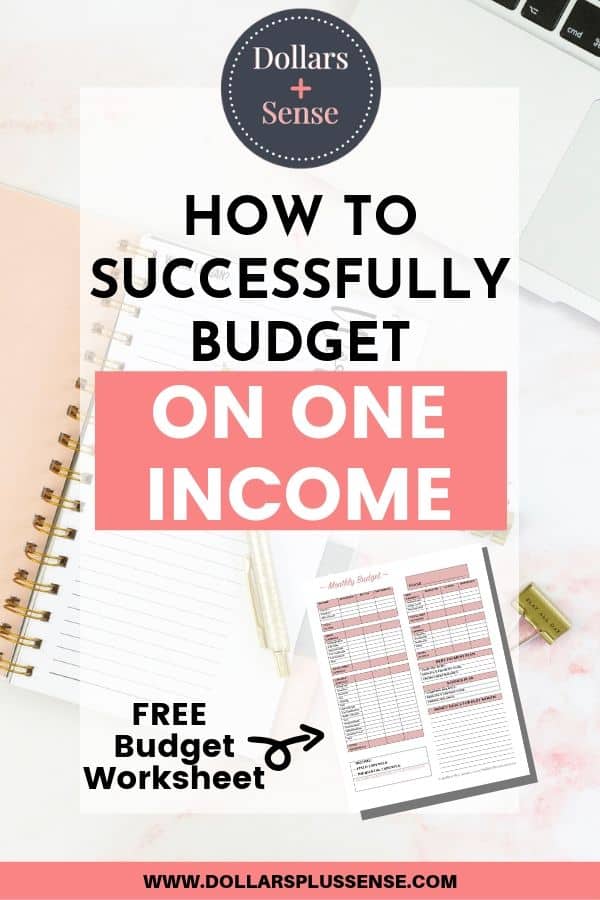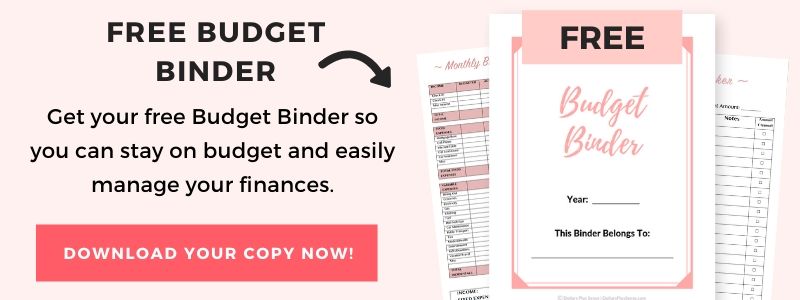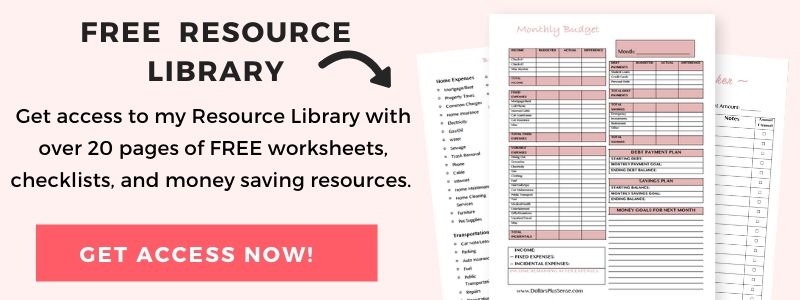Is your family considering living off of one income, or you’re already living off of one income? If so, I’m going to show you how you can survive and budget on one income.
Before You Start Budgeting On One Income
There are a few things you should do before you start to budget on one income:
Set Up Your Emergency Fund
If you haven’t transitioned to just one paycheck yet, I would recommend you have a solid emergency fund first. This can help reduce any stress that you may have about living on one income. It can also protect you from any unexpected expenses that may come up.
Since you will be living off of one income now, you should have six months or more of living expenses in your emergency fund by the time you switch to one income. The reason for this is you are at a higher risk if the income earner loses their job. This is because you don’t have the cushion of the other income to fall back on.
Related Article: How To Build An Emergency Fund
Pay Down As Much Debt As Possible
You want to pay off as much high-interest debt as possible while you’re still a two-income household. This will help lower your monthly expenses so you’re not stretched too thin when you switch to one income.
Start by paying off your highest-interest debt first. Calculate how long it will take you to pay off that debt, and consider pushing back your timeline to leave your job if it means you will have less debt moving forward.
How To Budget On One Income
Once you have set up your emergency fund and paid down as much high interest debt as possible, you can start focusing on setting up your one income budget.
Determine Your New Net Income (Take Home Pay)
The first thing you need to do is figure out your new take-home pay (your pay after taxes and expenses). If you have earned income from an employer where taxes are automatically deducted, this is easy to establish.
However, if you have other types of income—such as self-employment or other outside sources of income—be sure to subtract obligations like taxes and business expenses to determine your take-home pay.
Your final take-home pay is called net income, and that is the number you should use when creating your budget.
Determine Your Monthly Expenses

Next, you have to determine your new monthly expenses. Be sure to factor in how much you will save by cutting out work-related expenses such as: commuting, lunches, dry cleaning, professional memberships, and buying work clothes. Also, remember to cut out any other monthly expenses you will no longer have such as child care.
Start Cutting Back Where You Can
Now that you’ve figured out your new take-home pay and monthly expenses, see if there are any other expenses you can cut back on. Now that you will be living on only one income, I think it’s important to try and cut down your spending where you can. Make a list of your monthly expenses and cross out everything you can do without.
For example, could you get rid of a second car or move to a less expensive neighborhood now that you don’t have to commute to work anymore?
Being that transportation and housing is usually the highest expense we have, I would try to cut in these areas first. It’s very important to embrace frugality if you decide to live off of one income.
Determine How Much You Will Spend In Each Expense Category

After establishing your monthly income, expenses, and cutting back where you can, hopefully, the end result shows more income than expenses. If you are showing a higher expense column than income, you need to make some more changes and find other areas you cut back.
After you have done that, start determining how much money you can allocate to each spending category. You can download this FREE Budget Categories List to help you get started.
If you’re having a hard time figuring out how much you should be spending in each expense category, read my article “How Much Should I Be Spending?” This article will give you a general idea of how much of your income you should allocate to each spending area.
Track Your Spending

Now that you will be living off of only one income, it is super important that you stick to your budget. Therefore, you should review your spending to make sure you’re staying on track. You can use this FREE Daily Expense Tracker to help you with that.
I personally recommend recording your spending everyday, or at the very least, once a week. Print out multiple sheets (one for each spending category or sub-category). Then put all your sheets in one place (like a binder or folder).
If you track your spending everyday, you should write down what you spend as you go. Make a note in your phone or on a small piece of paper as you spend throughout the day. Then write the numbers in your expense tracker at the end of the day.
If you decide to track your spending every week instead, you can go online to your credit card, bank’s website, or use a third party like Personal Capital to see your spending for the week. Then write down those transactions into your daily expense tracker. Remember to also keep track of any cash you may have spent since this will not be on your bank statements.
Once you have recorded your spending for the month, plug in the numbers from your daily expense tracker (or whatever other method you use to track your spending) into your monthly budget.
Take a minute to sit down and compare the actual expenses versus what you had in your budget. This will show you where you did well and where you may need to improve. You should not let a month pass without reviewing your budget.
Don’t Forget Your Savings Goals

Although you will be living off of one income, it’s important to make sure you don’t forget to continue putting money towards your financial goals. You should continue to save for your financial goals such as retirement or paying off debt.
If you’re married, the working spouse can continue to contribute to their 401K (or related employer-sponsored plan); and the non-working spouse can contribute to a tax-advantage spousal IRA.
Make Adjustments Where Necessary
Having documented your income and spending, see where you may be falling short and make the necessary adjustments. Are you saving enough money?
If you spend more than you budgeted in a particular area, figure out why you spent more. Maybe your budget in that particular area is not realistic and you need to make adjustments, or maybe you need to figure out ways to cut your expenses in that area.
It’s important that you evaluate your budget and make adjustments as time goes by. This will make sure you’re still on track to achieving your financial goals.
Summary
In summary, when you budget on one income, you have to be more mindful of your spending. Start by having a fully funded emergency fund and pay off as much high-interest debt as possible.
To make a budget that works you need to determine your new take-home pay and monthly expenses. Next, you need to know how much of your income you plan to spend in each expense category. Make sure to track and review your spending frequently.
Finally, don’t forget to continue putting money towards your financial goals, and make changes in your budget when necessary. If you need a system to organize your finances and start budgeting, sign up for my FREE Budget Binder.
Related Articles:
- How I Use My Monthly and Yearly Household Budget Spreadsheet
- Budget Organization Tools: The Ultimate Personal Finance Binder
- Take Control of Your Money With This FREE Printable Budget Binder
If you want to remember this article, pin it to your favorite Pinterest board.






